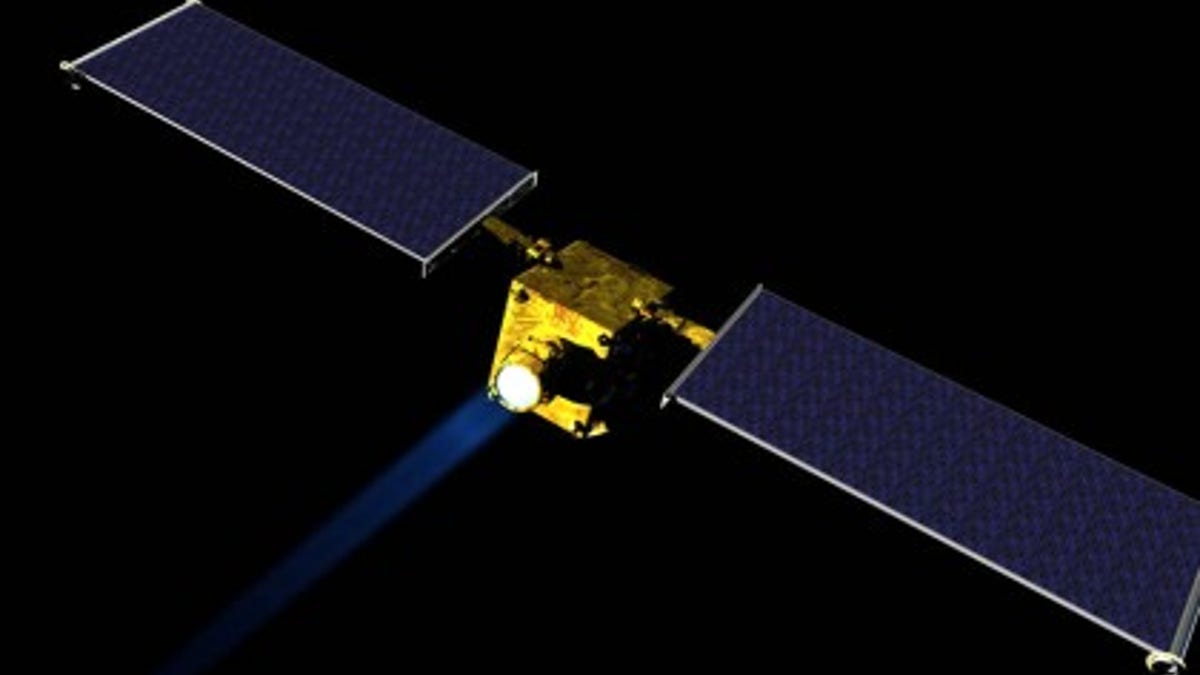
Artist concept of NASA's DART spacecraft, part of NASA’s first mission to demonstrate an asteroid deflection technique for planetary defense (NASA/JHUAPL)
If you’re the sort who lies awake at night in a cold sweat, holding your breath, worrying that an asteroid is going to hit the Earth and wipe out the world as you know it, your worries could soon be over.
Soon, as in 10 years or so.
NASA’s Double Asteroid Redirection Test (DART) spacecraft, the American half of the international Asteroid Impact and Deflection Assessment (AIDA) Mission, has advanced to the preliminary design phase. If all goes according to plan, it will blast off from Earth in 2024.
NASA JUST SHOWED OFF HOW IT WOULD HELP SAVE THE PLANET FROM 'POSSIBLE LIFE-THREATENING' ASTEROIDS
Its mission: to redirect a nonthreatening asteroid.
Its goal: to prove it can be done when and if a large one actually threatens to hit us. Move aside, Bruce Willis and Ben Affleck. This could actually work.
If all goes according to plan, DART will crash into a small asteroid called Didymos B at the speed of 3.7 miles per second, about nine times faster than a bullet. Then scientists on Earth will monitor whether and how the collision alters Didymos B’s orbit around its larger twin, Didymos A.
NASA ORBITER SNAPS STUNNING 'NIAGARA FALLS OF MARS' PIC
Scientists chose Didymos B because, at roughly 500 feet in diameter, it is typical of an asteroid that could pose a common hazard to Earth.
Move it, and you don’t have to move the world.
"DART is a critical step in demonstrating we can protect our planet from a future asteroid impact," said Andy Cheng, who is co-leading the DART investigation at the Johns Hopkins Applied Physics Laboratory (APL), which will build the refrigerator-sized spacecraft.
NASA DEBUNKS ANONYMOUS CLAIM OF IMMINENT ALIEN LIFE DISCOVERY
"Since we don't know that much about their internal structure or composition, we need to perform this experiment on a real asteroid. With DART, we can show how to protect Earth from an asteroid strike with a kinetic impactor by knocking the hazardous object into a different flight path that would not threaten the planet."




















